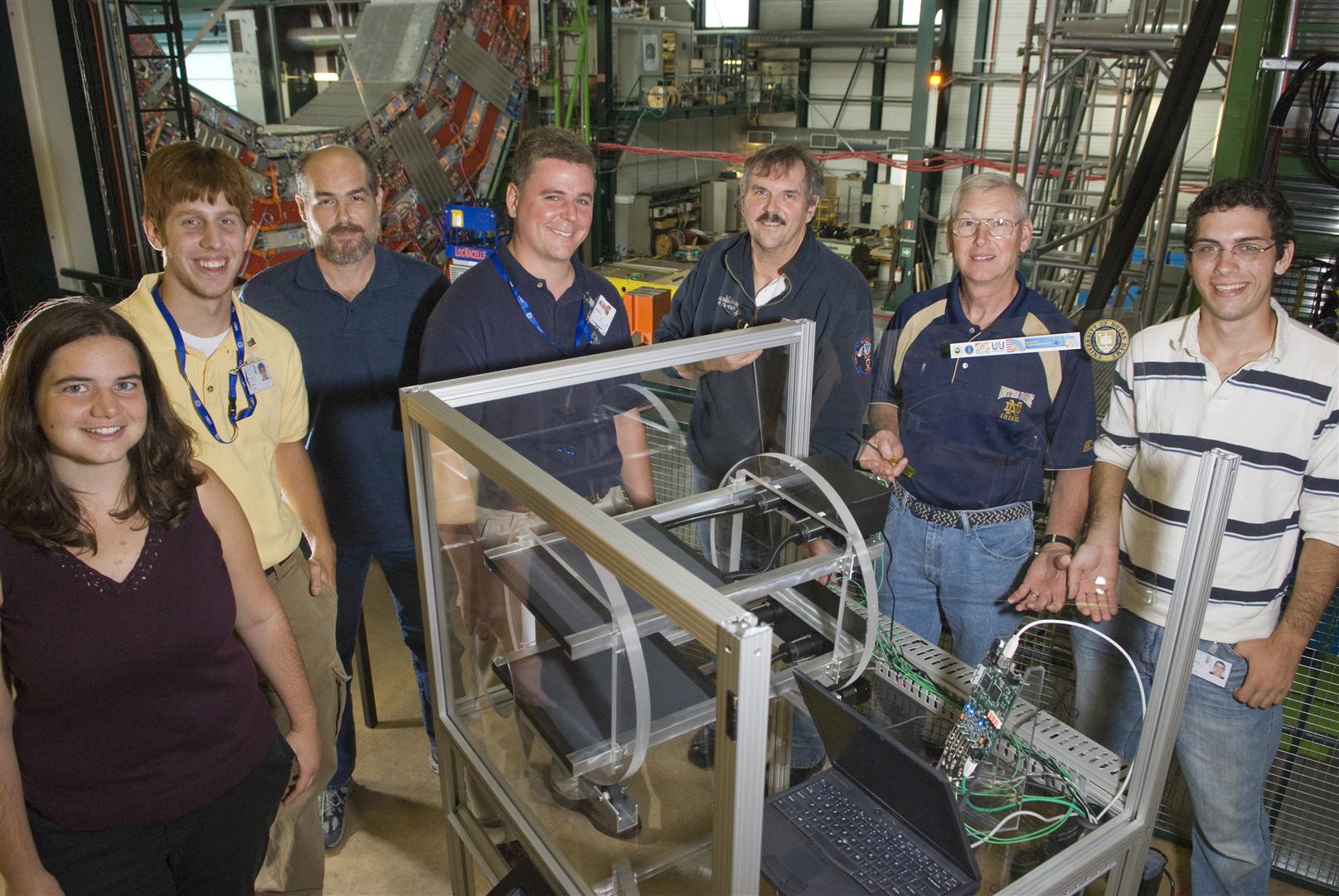Students catch cosmic rays
Students from the USA’s QuarkNet programme install their muon detector in the CMS visitors centre.
For high-school students, summer usually means heading to the beach and hanging out with friends. But this year, Tony Coiro and Caleb Phillips had different plans. They enrolled in the QuarkNet programme and spent the summer creating a tabletop muon detector that is now on display in the CMS visitors gallery, and last week they were here to install it.
"I loved the programme, absolutely loved it," said Tony. "We started in mid-June and worked up to 2 August - it was five days a week, five and a half hours a day, but I enjoyed every minute of it."
QuarkNet is a national programme in the United States that aims to involve high- school physics teachers and students in physics research and the LHC experiments. Physicists who work on these projects scout their hometowns every summer for suitable teachers and students.
"It started in 1999 and since then something like 150 to 200 physicists have been involved. Currently 54 different universities and labs are taking part," explains Dan Karmgard, the US-CMS outreach coordinator from Notre Dame University in Indiana.
The project these students and teachers have worked on at Notre Dame relates directly to LHC technology. Their detector records muons from cosmic radiation but uses similar materials to those in CMS’s hadron calorimeter.
When a muon passes through the detector, tiles of plastic scintillator release photons. Embedded fibres then carry these to a photomultiplier tube, where they are converted to electrical pulses. Hits on all four tiles constitute a coincidence and then, as Tony explains, "you know you’ve got a muon."
The detector can be controlled via an interactive touch screen. The rectangular tiles are installed inside a cylinder structure that visitors are able to rotate, and as you change the area exposed to cosmic rays, you see the count rate rise and fall. Visitors can even put their hand between the tiles and see that it doesn’t affect the count rate, demonstrating that muons are so penetrative they go straight through. Teacher Danielle McDermott explains, "We wanted them to build something that’s interesting to look at, that you can play around with and still get all of the important information."
Previous QuarkNet teachers and students have contributed to CMS by doing cabling on the detector, constructing and installing components and helping with the commissioning.
Next summer, the LHC is set to provide data for the new students to analyse. "We’ll provide live data and let them search it and decide what it is they’re looking for and try and understand something of what a real scientist does. We’ll have something of a different emphasis: less building, more analysis," explains Dan.
The students also get research credits that help in university applications. "A number of the students have written papers, and been published, in Nuclear Instruments and Methods, for example," remarks Dan.
Tony and Caleb have yet to decide their future career paths but physics and engineering are high on the agenda. "I think this project gets people excited about physics," says Caleb. "I love that it’s a simpler version of what’s inside CMS. It’s been an excellent way to spend my summer."
Tony agrees: "To work all summer and then come here and build it again, I can’t even put it into words. For me this is more fun than being on a beach somewhere."


